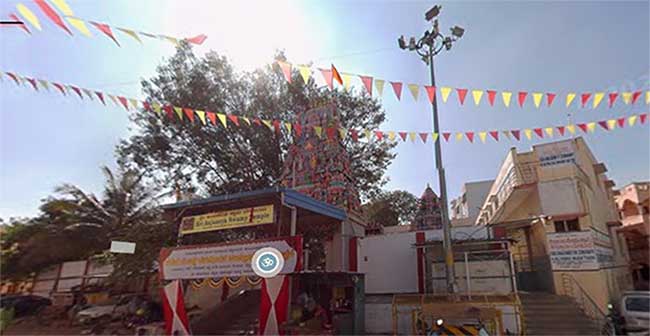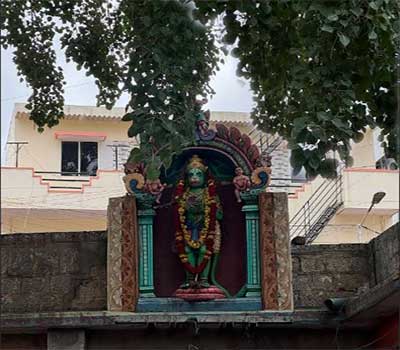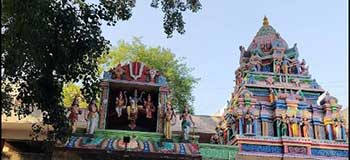
Bengaluru
Fort and Pete were the foundation of the present city of Bengaluru. With the British setting up a cantonment, it started to grow. After the independence of India, heavy industries came up, and Bengaluru grew more. With the IT industries coming up in large numbers, managing the city became a heavy task. Yelahanka, Hebbal, and Anekal, each with its own rural histories, had lost the charm of antiquity by coming into the urban area.
Then, finally, in 1986, the city was split into two districts, namely Bengaluru Urban, Bengaluru Rural. This prevented the villages from losing their social and historical identity. But many of the villages, which by then had merged with Bangalore City, had lost their identity except their name.
Villages of Karnataka
 In India, a place is named that potentially relates to the area's natural features, historical significance, or settlement. Karnataka is no exception to this, and many villages were named on these criteria. Two common suffixes, "halli" and "wadi," both meaning "village" or "settlement" in Kannada, frequently appear in village names. In Bengaluru of today, we come across places with the suffix ‘halli’ in plenty, many, which were villages and are now an integral part of the city.
In India, a place is named that potentially relates to the area's natural features, historical significance, or settlement. Karnataka is no exception to this, and many villages were named on these criteria. Two common suffixes, "halli" and "wadi," both meaning "village" or "settlement" in Kannada, frequently appear in village names. In Bengaluru of today, we come across places with the suffix ‘halli’ in plenty, many, which were villages and are now an integral part of the city.
Traditionally, every village has a deity called the ‘grama devata’, who is worshipped for bestowing prosperity, health, and protection. Many villages have a second deity as a guardian of the village and protector from enemies and evil. In some villages, there is no separate guardian deity. While the ‘grama devata’ is established inside the village, the guardian deity is instituted on the border of the village. These deities differ from village to village and across different regions.
Sri Adi Sankara, when he founded the Peetham at Sringeri, installed four guardian deities to protect Sringeri, namely Kalabhairava, Anjeneya, Durgamba, and Kalikamba. With this as the beginning, the tradition of having Anjaneya as a guardian deity became common in Karnataka, South Maharashtra, and Andhra. This practice gained further momentum with Sri Vayasaraja’s propagation of Sri Anjaneya as the deity of protection.
Readers may find detailed information about Sringeri "Sri Kere Anjaneya Temple" on our site.
North-east Bangalore
North-east of Bangalore, which has started urbanizing, encompasses several villages, including Kacharakanahalli, Lingarajapura, Baiyyappanahalli, Jivanahalli, Kariyannapalya, Kadugondanahalli, Chellakere, Hennur, Meganahalli, Dodda Banasawadi, and Chikka Banasawadi, among others. Since this area is close to the cantonment, it attracted retired army officers to settle down. With this, the development started, initially in Lingarajapura, followed by Kammanahalli, etc.
Sri Adi Sankara, when he founded the Peetham at Sringeri, installed four guardian deities to protect Sringeri, namely Kalabhairava, Anjeneya, Durgamba, and Kalikamba. With this as the beginning, the tradition of having Anjaneya as a guardian deity became common in Karnataka, South Maharashtra, and Andhra. This practice gained further momentum with Sri Vayasaraja’s propagation of Sri Anjaneya as the deity of protection.
Urbanization has swallowed up the agricultural land, where rice, Raagi, vegetables like potatoes, tomatoes, and horticultural products like marigolds and jasmine were grown in these villages, giving way to bungalows and churches.
City Improvement Trust Board, precursor to the Bangalore Development Authority, developed these areas. Kammanahalli developed more rapidly than Lingarajapura, attracting a larger number of residents. It eventually became diverse and gained a cosmopolitan reputation, although many villages lost their identities and became part of Kammanahalli. However, one village named Banasawadi kept its identity, thanks to Sri Anjaneya.
Banasawadi
Even before Kammanahalli established its name, Banasawadi was already well known to many Bengalurians. Sri Anjaneya of Banasawadi is known for the tears shed from the eyes of the Lord of the temple.
The village is referred to by two names, Dodda Banasavadi and Chikka Banasavadi, because of its geographical size. Dodda means big, and chikka means small in the Kannada language. The temple is located in Dodda Baswadi. Before the development of this area by CIT, many Bengalurians used to visit the Sri Anjaneya temple using odd transport means like tractors, carts, due to the lack of direct bus services from the city.
Memories shared by Sri gk kaushik
"I recall my elder brother telling me that our mother visited this temple in the 1950s, taking a bus up to a certain point, and then walking through fields to reach the temple. I had visited the temple in 1973, then in 1983, and even then, the village atmosphere was very much prevailing."
Anjaneya temple
 Over a period with generous donations from devotees, a simple shrine of the Lord had grown into a big temple with Raja gopuram, sannidhi for Sri Rama parivar, Basaweshwara [Shiva], annadhana koodam, marriage hall, etc. The age-old banyan tree and Sri Anjaneya had witnessed these developments.
Over a period with generous donations from devotees, a simple shrine of the Lord had grown into a big temple with Raja gopuram, sannidhi for Sri Rama parivar, Basaweshwara [Shiva], annadhana koodam, marriage hall, etc. The age-old banyan tree and Sri Anjaneya had witnessed these developments.
One has to wade through the narrow roads of Banswadi to reach the temple. A three-tier raja gopuram, facing north, welcomes the devotee. As one enters through the raja gopuram, in the open area [angan], on the left is a huge ancient banyan tree. The entrance to Sannidhi for Sri Rama parivar is prominently visible straight ahead, and its façade features a beautifully rendered stucco depiction of Sri Rama, Sri Sita, and Sri Lakshmana. In the left corner is the sannidhi for Sri Anjaneya, its façade features a stucco depiction of ‘Srirama gana mohita’ Sri Anjaneya. One may observe that the Anjaneya sannidhi is situated under the banyan tree.
The devotee first has darshan of Sri Anjaneya, and does the circumambulation [parikrama] of the sannidhi, and proceeds to have darshan of Sri Rama.
Sri Anjaneya
 The vigraha is of monolithic statue type, sculptured and carved from a single, massive block of stone. Sculptured in embossed style with ‘prabha’, the Lord’s idol is nearly four feet in height.
The vigraha is of monolithic statue type, sculptured and carved from a single, massive block of stone. Sculptured in embossed style with ‘prabha’, the Lord’s idol is nearly four feet in height.
The shrine faces west, and the Lord is seen walking southward. Lord is wearing ‘thandai’ and ‘nupur’ on His lotus feet. The tail of the Lord is seen near His lotus feet. Dhoti in traditional kacham style held by a decorative waist belt, a ‘bichwa’ [combat knife] is also seen. Yagyopavit and a few malas are seen on the chest. Decorative kankan adorn His wrist, and Keyur in the upper arm shows His ‘bhuja-balam.’ His left hand is holding a sowgandhika flower, and His right hand raised in ‘abhaya mudra,’ the Lord bestows blessings upon His devotees.
Pleasant cheeks, broad forehead, elongated ears adorned with kundalam, and above all, the large and radiant eyes are sure to mesmerize the devotees. The crown over His head adds to His divine beauty.
Location of the temple: "Sri Anjaneya Temple, Banaswadi, Bengaluru"
Experience
Visit this kshetra where the Lord revealed Himself to bless His devotees, and have darshan, and rebuild the confidence to achieve the best of life righteously.
SRI HANUMAN THINKS DIFFERENTLY, THINKS FAST
THINKS AHEAD AND ACTS FOR SURE
Ed [November 2025]



